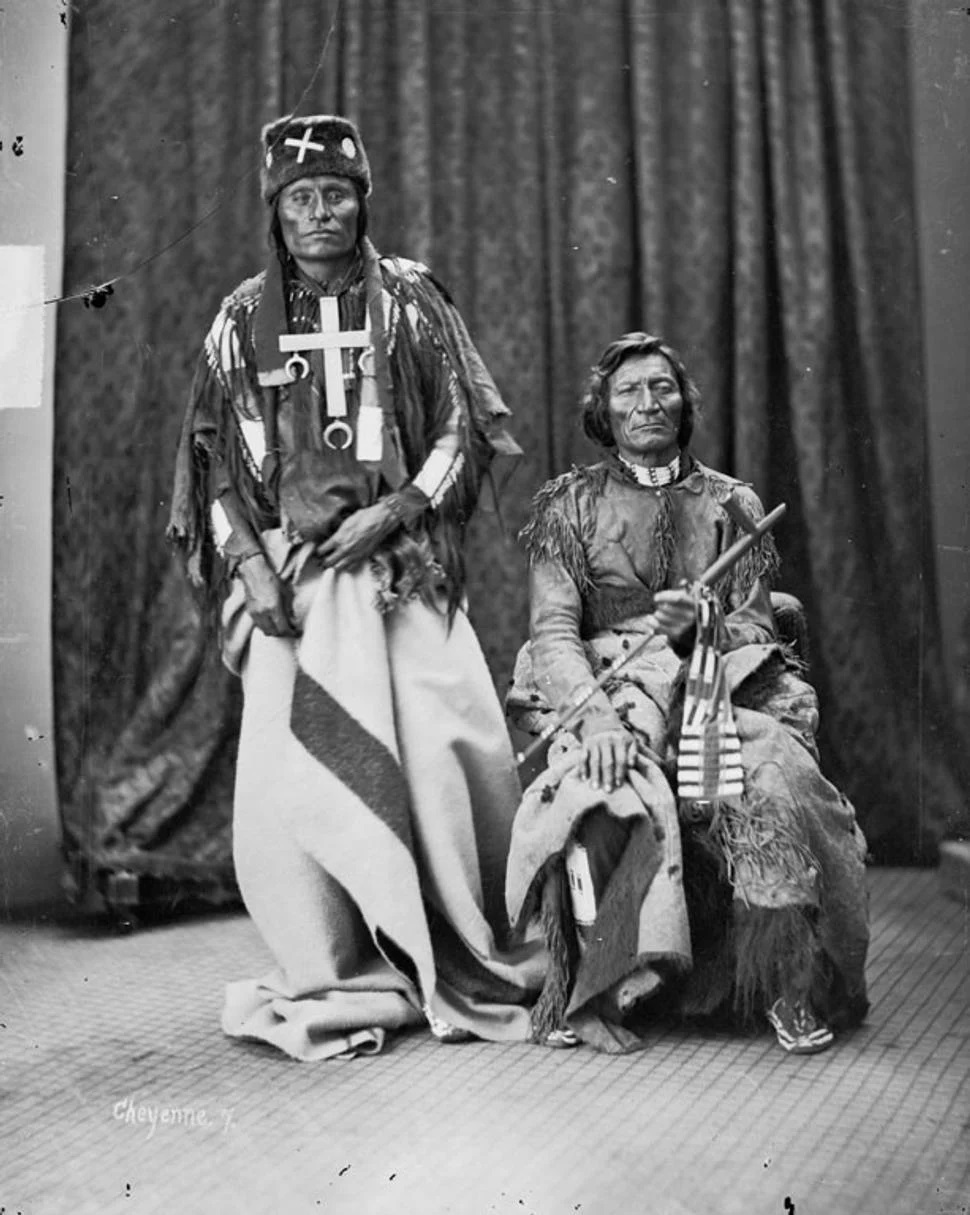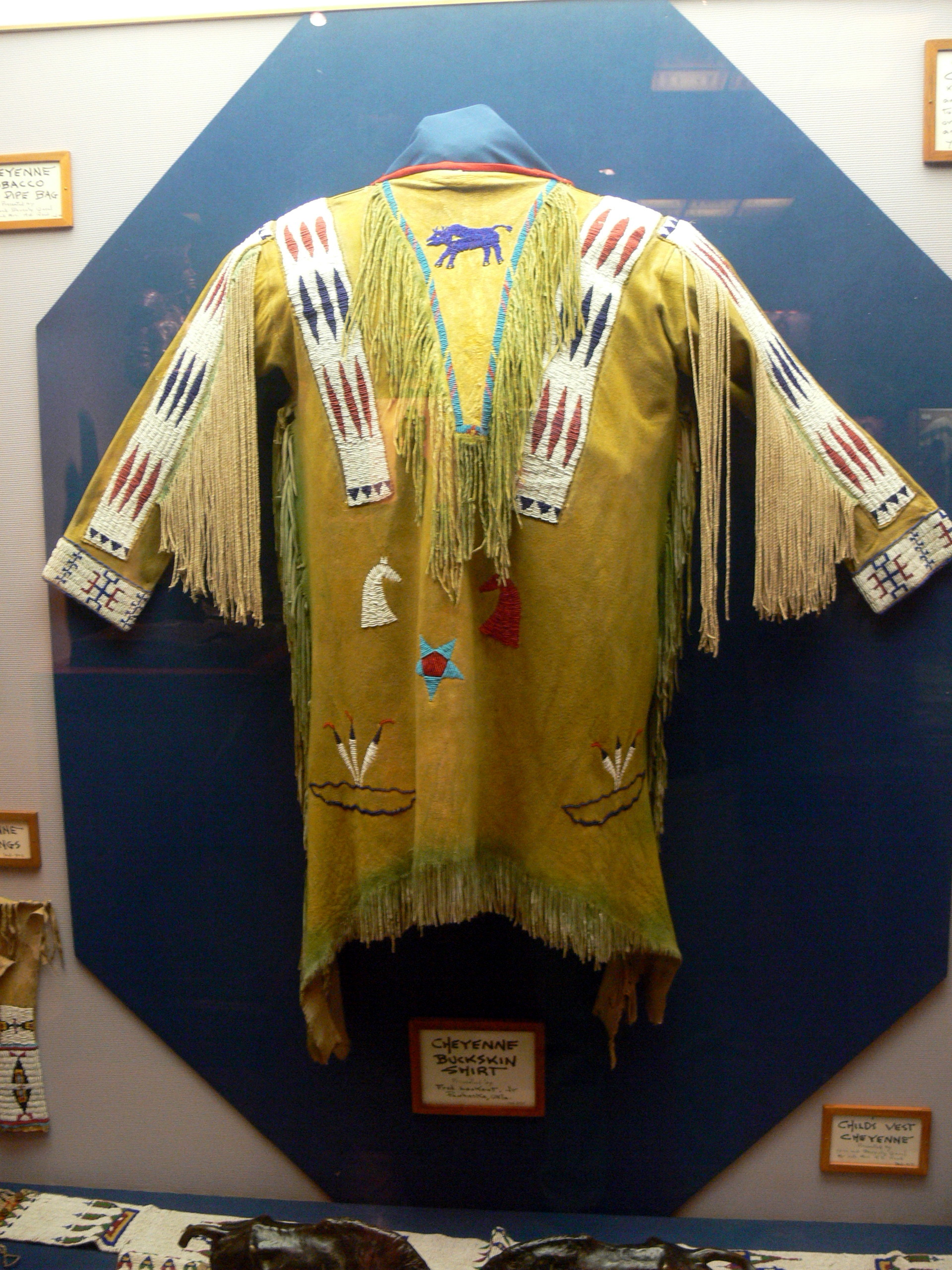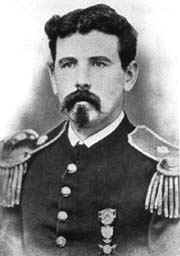|
Morning Star (chief)
Morning Star (Cheyenne: ''Vóóhéhéve''; also known by his Lakota Sioux name ''Tȟamílapȟéšni'' or its translation, Dull Knife) (1810–1883) was a great chief of the Northern Cheyenne people and headchief of the ''Notameohmésêhese'' ("Northern Eaters"; also simply known as ''Ȯhmésėhese'' or "Eaters") band on the northern Great Plains during the 19th century. He was noted for his active resistance to westward expansion and the United States federal government. It is due to the courage and determination of Morning Star and other leaders that the Northern Cheyenne still possess a homeland in their traditional country in present-day Montana. Although he was known as "Dull Knife" (or ''Motšêške Ôhnêxahpo'' in Cheyenne, a translation of his Lakota name) to local settlers, U.S. military leaders, and other American Indians, his Cheyenne name is translated as "Morning Star". A Cheyenne warrior in every sense of the word, Morning Star was described by many writers of the e ... [...More Info...] [...Related Items...] OR: [Wikipedia] [Google] [Baidu] |
Cheyenne
The Cheyenne ( ) are an Indigenous people of the Great Plains. Their Cheyenne language belongs to the Algonquian language family. Today, the Cheyenne people are split into two federally recognized nations: the Southern Cheyenne, who are enrolled in the Cheyenne and Arapaho Tribes in Oklahoma, and the Northern Cheyenne, who are enrolled in the Northern Cheyenne Tribe of the Northern Cheyenne Indian Reservation in Montana. The Cheyenne comprise two Native American tribes, the Só'taeo'o or Só'taétaneo'o (more commonly spelled as Suhtai or Sutaio) and the Tsétsêhéstâhese (also spelled Tsitsistas, The term for the Cheyenne homeland is ''Tsiihistano''. Language The Cheyenne of Montana and Oklahoma speak the Cheyenne language, known as ''Tsêhésenêstsestôtse'' (common spelling: Tsisinstsistots). Approximately 800 people speak Cheyenne in Oklahoma. There are only a handful of vocabulary differences between the two locations. The Cheyenne alphabet contains 14 letter ... [...More Info...] [...Related Items...] OR: [Wikipedia] [Google] [Baidu] |
Northern Cheyenne Exodus
The Northern Cheyenne Exodus, also known as Dull Knife's Raid, the Cheyenne War, or the Cheyenne Campaign, was the attempt of the Northern Cheyenne to return to the north, after being placed on the Southern Cheyenne reservation in the Indian Territory, and the United States Army operations to stop them. The period lasted from 1878 to 1879. Background Following the Battle of the Little Bighorn The Battle of the Little Bighorn, known to the Lakota and other Plains Indians as the Battle of the Greasy Grass, and also commonly referred to as Custer's Last Stand, was an armed engagement between combined forces of the Lakota Sioux, No ... attempts by the U.S. Army to subdue the Northern Cheyenne intensified. In 1877, after the Dull Knife Fight, when Crazy Horse surrendered at Fort Robinson a few Cheyenne chiefs and their people surrendered as well. The Cheyenne chiefs that surrendered at the fort were Dull Knife, Little Wolf, Standing Elk, and Wild Hog with nearly one thousand ... [...More Info...] [...Related Items...] OR: [Wikipedia] [Google] [Baidu] |
Native American Leaders
Native may refer to: People * Jus soli, citizenship by right of birth * Indigenous peoples, peoples with a set of specific rights based on their historical ties to a particular territory ** Native Americans (other) In arts and entertainment * Native (band), a French R&B band * Native (comics), a character in the X-Men comics universe * ''Native'' (album), a 2013 album by OneRepublic * ''Native'' (2016 film), a British science fiction film * ''The Native'', a Nigerian music magazine In science * Native (computing), software or data formats supported by a certain system * Native language, the language(s) a person has learned from birth * Native metal, any metal that is found in its metallic form, either pure or as an alloy, in nature * Native species, a species whose presence in a region is the result of only natural processes Other uses * Northeast Arizona Technological Institute of Vocational Education (NATIVE), a technology school district in the Arizona portion ... [...More Info...] [...Related Items...] OR: [Wikipedia] [Google] [Baidu] |
Cheyenne People
The Cheyenne ( ) are an Indigenous people of the Great Plains. Their Cheyenne language belongs to the Algonquian language family. Today, the Cheyenne people are split into two federally recognized nations: the Southern Cheyenne, who are enrolled in the Cheyenne and Arapaho Tribes in Oklahoma, and the Northern Cheyenne, who are enrolled in the Northern Cheyenne Tribe of the Northern Cheyenne Indian Reservation in Montana. The Cheyenne comprise two Native American tribes, the Só'taeo'o or Só'taétaneo'o (more commonly spelled as Suhtai or Sutaio) and the Tsétsêhéstâhese (also spelled Tsitsistas, The term for the Cheyenne homeland is ''Tsiihistano''. Language The Cheyenne of Montana and Oklahoma speak the Cheyenne language, known as ''Tsêhésenêstsestôtse'' (common spelling: Tsisinstsistots). Approximately 800 people speak Cheyenne in Oklahoma. There are only a handful of vocabulary differences between the two locations. The Cheyenne alphabet contains 14 letters. The ... [...More Info...] [...Related Items...] OR: [Wikipedia] [Google] [Baidu] |
Bury My Heart At Wounded Knee
''Bury My Heart at Wounded Knee: An Indian History of the American West'' is a 1970 non-fiction book by American writer Dee Brown that covers the history of Native Americans in the American West in the late nineteenth century. The book expresses details of the history of American expansionism from a point of view that is critical of its effects on the Native Americans. Brown describes Native Americans' displacement through forced relocations and years of warfare waged by the United States federal government. The government's dealings are portrayed as a continuing effort to destroy the culture, religion, and way of life of Native American peoples. Helen Hunt Jackson's 1881 book ''A Century of Dishonor'' is often considered a nineteenth-century precursor to Dee Brown's book. Before the publication of ''Bury My Heart...'', Brown had become well-versed in the history of the American frontier. Having grown up in Arkansas, he developed a keen interest in the American West, and durin ... [...More Info...] [...Related Items...] OR: [Wikipedia] [Google] [Baidu] |
Dee Brown (writer)
Dorris Alexander "Dee" Brown (February 29, 1908 – December 12, 2002) was an American novelist, historian, and librarian. His most famous work, ''Bury My Heart at Wounded Knee'' (1970), details the history of the United States' westward colonization of the continent between 1830 and 1890 from the point of view of Native Americans. Personal life Born in Alberta, Louisiana, a sawmill town, Brown grew up in Ouachita County, Arkansas, which experienced an oil boom when he was thirteen years old. Brown's mother later relocated to Little Rock so he and his brother and two sisters could attend a better high school. He spent much time in the public library. Reading the three-volume ''History of the Expedition under the Command of Captains Lewis and Clark'' helped him develop an interest in the American West. He also discovered the works of Sherwood Anderson and John Dos Passos, and later William Faulkner and Joseph Conrad. He cited these authors as those most influential on his own ... [...More Info...] [...Related Items...] OR: [Wikipedia] [Google] [Baidu] |
Chief Dull Knife College
Chief Dull Knife College is a public tribal land-grant community college on the Northern Cheyenne Indian Reservation in Lame Deer, Montana. It is an open-admission college with about 141 students. On average, more than half of its graduates move on to four-year colleges. The college has one main building which houses administration, faculty offices, cafeteria facilities, bookstore, a learning center and sufficient classroom space to serve 300 students. Specialized laboratory facilities include a science laboratory, two computing labs, and a distance learning center and welding laboratory. In addition, separate facilities house the library, information technology, cultural center, the early childhood learning center, the adult education literacy center, the technical skills center, student activities center, student learning center, student lounge and Vocational Rehabilitation Center. History Previously known as Dull Knife Memorial College, CDKC was renamed in 2001 to emphasiz ... [...More Info...] [...Related Items...] OR: [Wikipedia] [Google] [Baidu] |
Montana Territory
The Territory of Montana was an organized incorporated territory of the United States that existed from May 26, 1864, until November 8, 1889, when it was admitted as the 41st state in the Union as the state of Montana. Original boundaries The Montana Territory was organized out of the existing Idaho Territory by Act of Congress and signed into law by President Abraham Lincoln on May 26, 1864. The areas east of the Continental Divide had been previously part of the Nebraska Territory and Dakota Territory and had been acquired by the United States in the Louisiana Purchase. The territory also included a portion of the Idaho Territory west of the continental divide and east of the Bitterroot Range, which had been acquired by the United States in the Oregon Treaty, and originally included in the Oregon Territory. The part of the Oregon Territory that became part of Montana had been split off as part of the Washington Territory. The boundary between the Washington Territory ... [...More Info...] [...Related Items...] OR: [Wikipedia] [Google] [Baidu] |
Fort Keogh
Fort Keogh is a former United States Army post located at the western edge of modern Miles City, in the U.S. state of Montana. It is situated on the south bank of the Yellowstone River, at the mouth of the Tongue River. Colonel Nelson A. Miles, commanding the 5th Infantry Regiment, founded the post in August 1876, in the wake of the Battle of the Little Bighorn, as a base for patrols to prevent the Cheyenne and Sioux involved in the battle from escaping to Canada. The fort was originally known as the Tongue River Cantonment for two years. When relocated one mile west in 1878, it was renamed Fort Keogh in honor of Captain Myles Keogh, who was killed at the Little Bighorn. In 1877, the fort became the headquarters for the newly created District of the Yellowstone (a sub-unit of the Department of Dakota), which was commanded by Miles. The development of Fort Keogh as a military installation soon stimulated traders to supply the liquor and other service businesses that were the be ... [...More Info...] [...Related Items...] OR: [Wikipedia] [Google] [Baidu] |
Fort Robinson Massacre
The Fort Robinson breakout or Fort Robinson massacre was the attempted escape of Cheyenne captives from the U.S. army during the winter of 1878-1879 at Fort Robinson in northwestern Nebraska. In 1877, the Cheyenne had been forced to relocate from their homelands on the northern Great Plains south to the Darlington Agency on the Southern Cheyenne Reservation in Indian Territory (Oklahoma). In September 1878, in what is called the Northern Cheyenne Exodus, 353 Northern Cheyenne fled north because of poor conditions on the reservation. In Nebraska, the U.S. Army captured 149 of the Cheyenne, including 46 warriors, and escorted them to Fort Robinson. In January 1879, after the Cheyenne had refused an earlier order to return to the south, the soldiers began to treat them harshly to try to force them south. They were confined to a barracks without food, water, or wood for heat. Most of the band escaped the barracks on January 9, but the US Army hunted them down. The Cheyenne were p ... [...More Info...] [...Related Items...] OR: [Wikipedia] [Google] [Baidu] |
Dakota Territory
The Territory of Dakota was an organized incorporated territory of the United States that existed from March 2, 1861, until November 2, 1889, when the final extent of the reduced territory was split and admitted to the Union as the states of North and South Dakota. History The Dakota Territory consisted of the northernmost part of the land acquired in the Louisiana Purchase in 1803, as well as the southernmost part of Rupert's Land, which was acquired in 1818 when the boundary was changed to the 49th parallel. The name refers to the Dakota branch of the Sioux tribes which occupied the area at the time. Most of Dakota Territory was formerly part of the Minnesota and Nebraska territories. When Minnesota became a state in 1858, the leftover area between the Missouri River and Minnesota's western boundary fell unorganized. When the Yankton Treaty was signed later that year, ceding much of what had been Sioux Indian land to the U.S. Government, early settlers formed a provi ... [...More Info...] [...Related Items...] OR: [Wikipedia] [Google] [Baidu] |
Pine Ridge Indian Reservation
The Pine Ridge Indian Reservation ( lkt, Wazí Aháŋhaŋ Oyáŋke), also called Pine Ridge Agency, is an Oglala Lakota Indian reservation located entirely within the U.S. state of South Dakota. Originally included within the territory of the Great Sioux Reservation, Pine Ridge was created by the Act of March 2, 1889, 25 Stat. 888. in the southwest corner of South Dakota on the Nebraska border. Today it consists of of land area and is one of the largest reservations in the United States. The reservation encompasses the entirety of Oglala Lakota County and Bennett County, the southern half of Jackson County, and a small section of Sheridan County added by Executive Order No. 2980 of February 20, 1904. Of the 3,142 counties in the United States, these are among the poorest. Only of land are suitable for agriculture. The 2000 census population of the reservation was 15,521; but a study conducted by Colorado State University and accepted by the United States Department of Hou ... [...More Info...] [...Related Items...] OR: [Wikipedia] [Google] [Baidu] |




.jpg)
